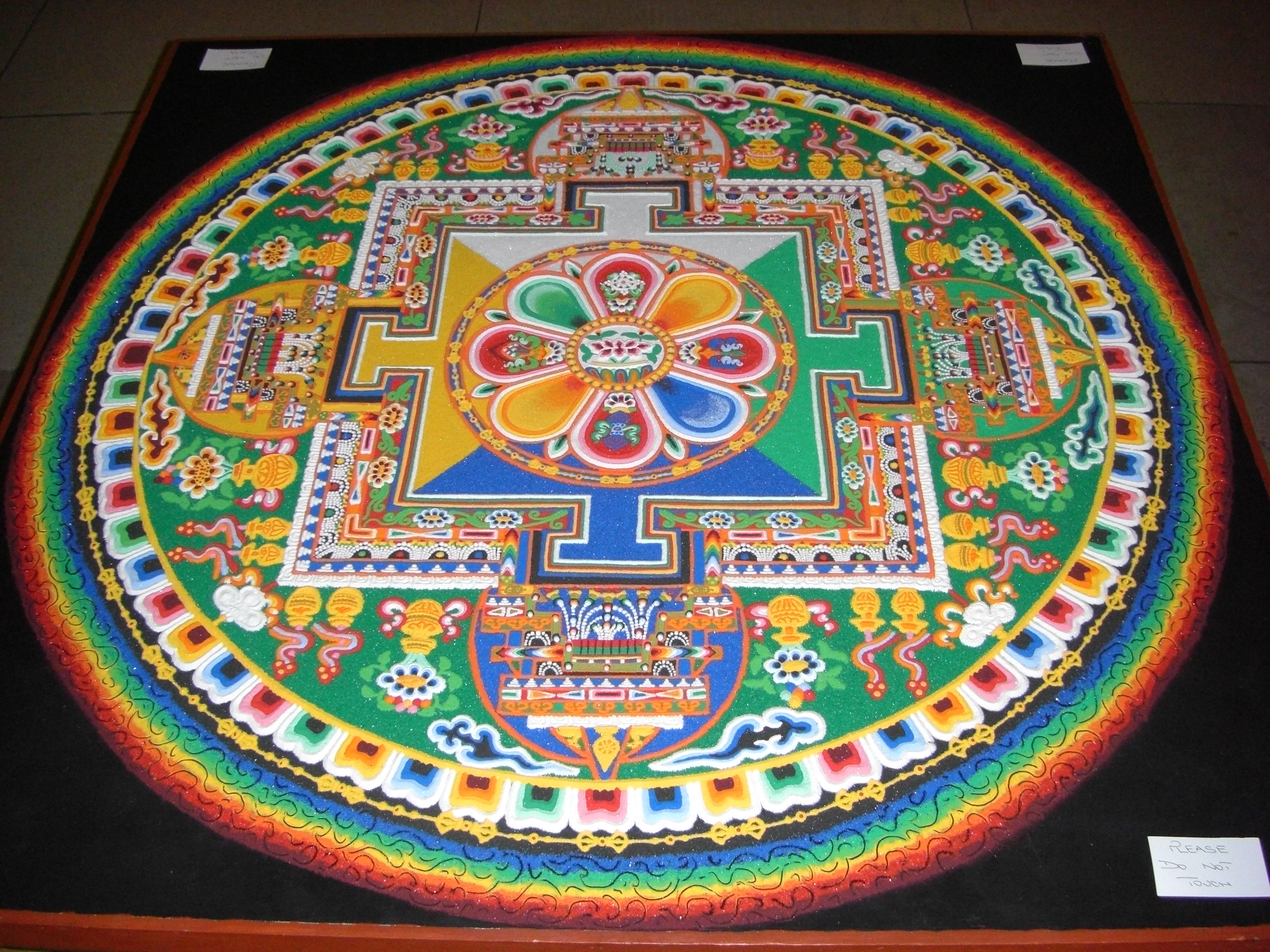Sometimes things that I see or read just speak to me. I cannot say why at the moment. As my cousin, a photographer and independent filmmaker, would say, they come together “behind my head.” Without fully understanding it on a logical level, somehow something in my heart seizes upon it and says, “This is important. This is good.” I usually ask why, but the part of my mind that recognizes has little interest in explaining. It knows that this is important, or beautiful, or good, and that is that.
just speak to me. I cannot say why at the moment. As my cousin, a photographer and independent filmmaker, would say, they come together “behind my head.” Without fully understanding it on a logical level, somehow something in my heart seizes upon it and says, “This is important. This is good.” I usually ask why, but the part of my mind that recognizes has little interest in explaining. It knows that this is important, or beautiful, or good, and that is that.
This blog post about an artist who makes beautiful designs by walking back and forth for hours on freshly fallen snow was one such focal point. When I read the story, and saw the pictures, all I could think was, “This is a work of love.”
I did not know why I thought that. I could not have explained it, but somehow it only makes sense in my mind to do something like that for love. The man spends hours trudging back and forth, and back and for th to create something that will be gone with the first new snow, vanished without a trace, as if it had never been. The only trace will be in the minds and hearts of those who have seen it. Without my thinking it through, this intuitively seemed to me to exemplify the purest form of art, to create something of beauty and rigor and rightness, and then to let it go so completely that, not only do you not care if it gets destroyed, you have designed it specifically to be wiped out.
th to create something that will be gone with the first new snow, vanished without a trace, as if it had never been. The only trace will be in the minds and hearts of those who have seen it. Without my thinking it through, this intuitively seemed to me to exemplify the purest form of art, to create something of beauty and rigor and rightness, and then to let it go so completely that, not only do you not care if it gets destroyed, you have designed it specifically to be wiped out.
Perhaps, in a way, these snow designs are like the sand mandala’s of the Dalai Lama.
One of the books I am currently reading is “The Story of a Soul,” The Autobiography of Saint Therese of Lisieux. A day or two ago I was reading Chapter 6 where she describes the pilgrimage she made to Rome with her father and sister. She speaks wonderingly about the beauty of Switzerland, “With its high mountains, their snowy peaks lost in the clouds, its rushing torrents, and its deep valleys filled with giant ferns and purple heather. Great good was wrought in my soul by these beauties of nature so abundantly scattered abroad. They lifted it to Him Who had been pleased to lavish such masterpieces upon this transient earth.”
It was the last half a sentence that caught my ear, “to lavish such masterpieces upon this transient earth.
One of the most ancient, most noble and most controversial of human undertakings has been the production of art. The question of what truly is and what is not art takes up a good deal of space in the writings of philosophers, along with subordinate questions such as its purpose, its use, its value to society, how or if it should be regulated or controlled, etc. (Another of my current reads is Plato’s “Republic” which is greatly concerned with such questions.) But it seemed to me, with a sudden clarity, and indeed a certainty, that both Simon Beck and the Dalai Lama had, perhaps intuitively or perhaps more cognitively, grasped the real purpose of art; that is, to imitate God in “lavishing masterpieces upon this transient earth.” Precisely by focusing their creativity into mediums of extreme impermanence, they see and escape one of the most dangerous snares of art, which is the illusion of permanence.
 Every aspiring artist nobly and rightly wishes to create art that will outlast him. He or she looks to the immortality of Shakespeare, Dante, Michelangelo, Boticelli, and others whose creations of goodness, truth and beauty have kept their names alive long after their bones are dust. Even the painter of the cave paintings in Cro Magnon, France, though his name is lost, his paintings live on. We all aspire to that.
Every aspiring artist nobly and rightly wishes to create art that will outlast him. He or she looks to the immortality of Shakespeare, Dante, Michelangelo, Boticelli, and others whose creations of goodness, truth and beauty have kept their names alive long after their bones are dust. Even the painter of the cave paintings in Cro Magnon, France, though his name is lost, his paintings live on. We all aspire to that.
However, in the immortal words of Admiral Akbar, “It’s a trap.” The permanence of Shakespeare and Dante are illusions. The marbles of Michelangelo will crumble to dust. Even the prehistoric caves will one day be a charred lump, along with the rest of this planet, in the cosmic sink that used to be our sun. When that happens, however, the soul of the human who created it will still exist. Perhaps this was why Therese of Lisieux was able to explain the precise place of art in such a brief sentence, in the middle of a book that meditates pretty exclusively upon the impermanence of all created things. She saw that only God is eternal, and she loved Him, and desired Him before all else, and so everything else fell into place, including created beauty. God does lavish masterpieces upon this transient earth, and calls us to do the same. We are called to pour out our attention, our effort, our blood and sweat and tears in imitation of Him, creating beautiful things with full knowledge that they are destined for oblivion.
This idea is especially relevant to the internet generation. On the internet you have millions of people, all trying to create something. Some are trying to create art, some are trying to create noise. Some still believe and are trying to create something meaningful, others have given up and are just hoping for five minutes of fame and a few thousand hits, by any means necessary. Some try to create beauty and meaning, others are content to expose themselves in any tomfoolery imaginable, if it gets them a little attention. My blogging is the same way. Each post may live for a few days at most, and even that is only if it is unusually popular, and then it disappears, snowed under the constantly shifting heap of relevance that is the Internet. It reaches a few people, maybe a dozen, and at best one or two will read the whole thing. The rest scan the first sentence of each paragraph, agree or disagree, and then move on to the next link.
In cosmic terms, i.e. in terms of eternity, the complete works of Shakespeare will fair no better, which is not to put myself even remotely in the same class as Shakespeare. It is only to point out that all things pass away, except God.
Once, in a discussion about art with my cousin (the same cousin mentioned above) I tried to describe art as “drawing my best picture with crayons and hoping God will hang it on His refrigerator.” Only in God’s eyes is the art that I create eternal. That is an amazing thing, if you think about it. God and I together create “memories” that exist in the mind of God for all eternity?
Whoah! Mind Blown!
I imitate God for the same reason that a two year old walks around with a plastic hammer hitting the furniture all day. That is what he sees Daddy doing. When I create a work of art, God sees it, He sees me creating it, He loves me. I give that work of art to Him with the same delight and trust with which a three year old gives his scribbles to his Mommy. Then I go on to the next one. The greatest masterpiece I will ever create is nothing more than another memory of my childhood for God to hang on His refrigerator. When I am fully grown, I will look back upon my worldly Magnum Opus and laugh at the squiggly lines and juice stains and dirty fingerprints. Only love makes anything permanent, because only love is of God.
That is the only worthwhile reason to create art, as a work of love, knowing that while the work may pass away, the love will outlast the universe.




